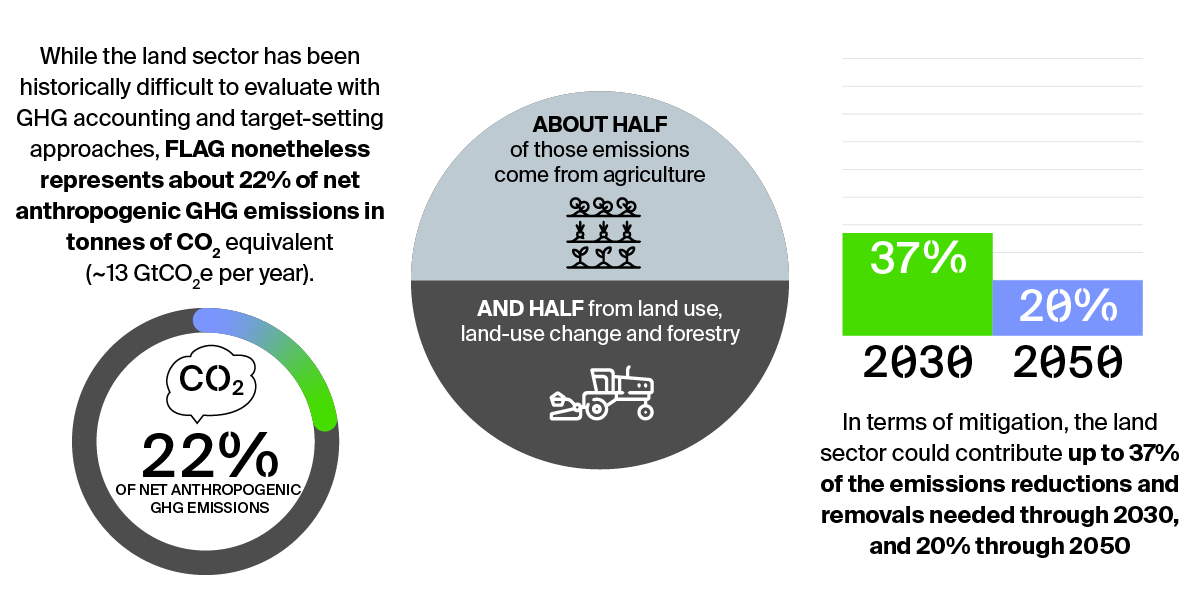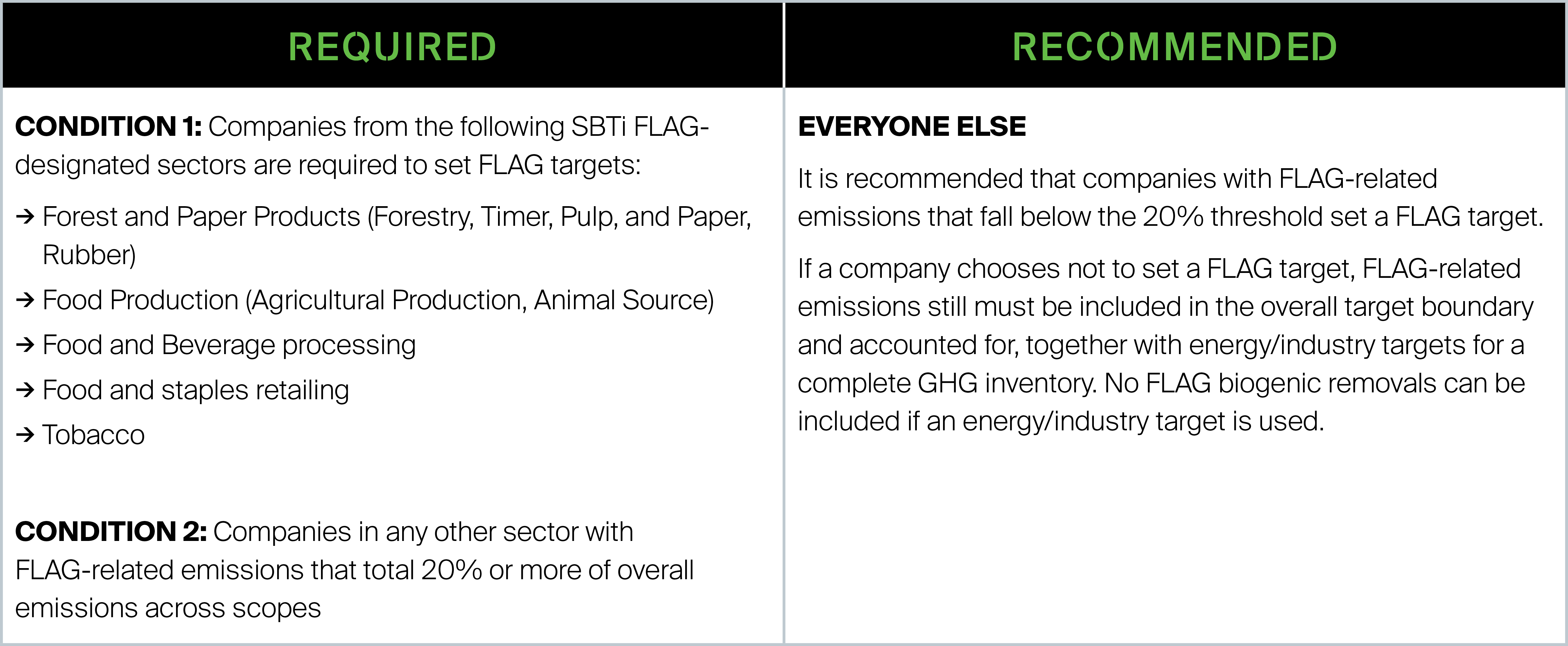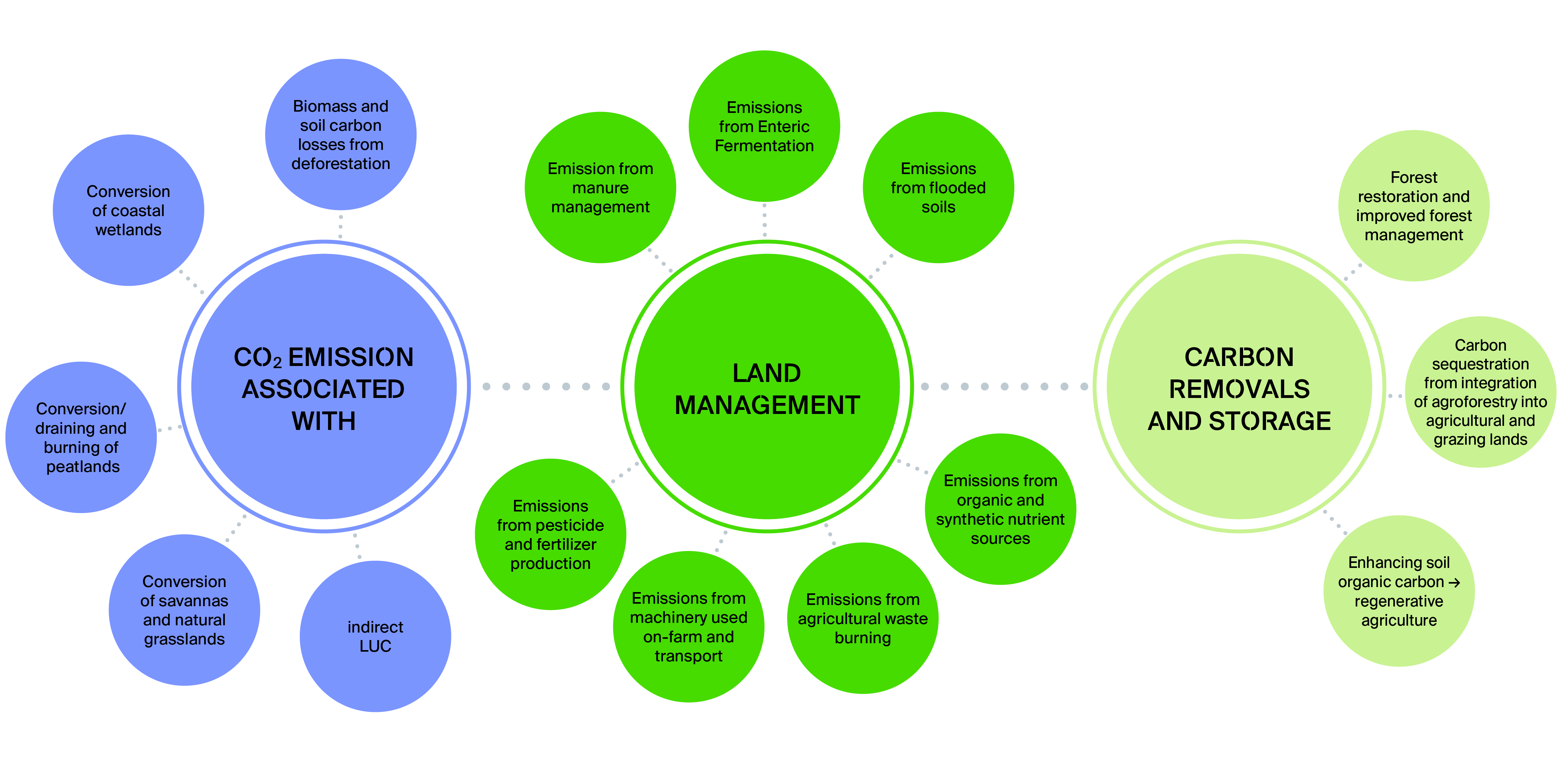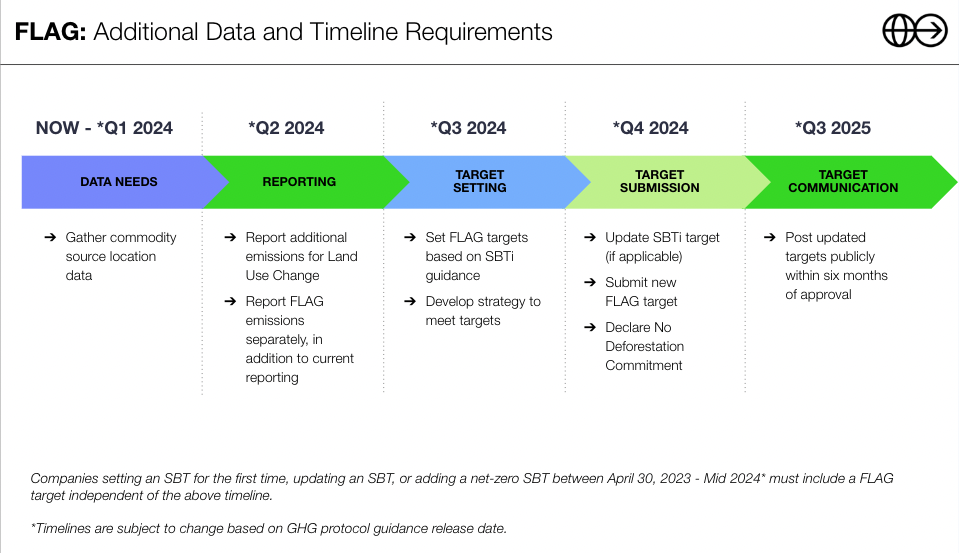
Stuck on SBTi FLAG Guidance?
Kayalin Akens-Irby joins Sr. Research Scientist, Alli Koehle, to unravel the complexity of setting and meeting FLAG targets. This masterclass is designed for Sustainability professionals in the food and consumer goods industries.
We dive deep into:
- SBTi FLAG Timeline & Requirements
- FLAG Guidance & Calculation Approach
- FLAG Components
- FLAG Reporting Structure
- How to get help to set and meet your FLAG reduction targets
Need a FLAG Primer? Start here and bookmark this page:
The forest, land, and agriculture sector is highly vulnerable to climate change and a major source of emissions, accounting for nearly a quarter of global greenhouse gas (GHG) emissions. However, only a few companies consider deforestation and land use change when calculating their carbon footprint or include them in reduction targets. The lack of guidance and methods has been a significant obstacle, but the SBTi's FLAG Guidance now enables companies to reduce the 22% of global greenhouse gas emissions from agriculture, forestry, and other land use.
Tracing the Roots: A Brief Historical Overview:
In September 2022, the Science Based Targets initiative (SBTi) unveiled the Forest, Land and Agriculture (FLAG) Science Based Target Setting Guidance. This directive was tailored specifically for sectors heavily vested in the land, such as food, agriculture, and forestry, to chart out science-backed targets encompassing land-induced emissions and their removal. Fast forward to June 2023 when SBTi announced new implementation timelines for FLAG target setting and recalculation to align with the publication of the GHG Protocol Land Sector and Removals Guidance.

SBTi FLAG Guidance: A Path to Achieving the Paris Agreement (1.5°C):
At its core, the SBTi FLAG Guidance offers companies a consistent and rigorous scientific framework. This empowers businesses to effectively reduce the scale and speed of land-related emissions in alignment with the goals of the Paris Agreement. The SBTi FLAG Guidance Document (and science-based targets for FLAG) apply specifically to the land-related emissions and removals (that qualify under the GHG Protocol accounting guidance) in a company’s direct emissions and supply chain.
Unpacking SBTi FLAG Requirements:
-
Set near-term FLAG targets: 5-10 year emission reduction targets in line with limiting warming to 1.5°C.
-
Account for removals in near-term FLAG targets: GHG removals include things like improving forest management practices, and enhancing soil carbon sequestration on working lands.
-
Set long-term FLAG targets: Companies in the forest, land and agriculture sectors will reduce at least 72% of emissions by no later than 2050. Use the SBTi Net-Zero guidance to set long-term FLAG targets.
-
Zero deforestation targets must be set for no later than 2025: In line with the Accountability Framework initiative (AFi). Read more on how this guidance accounts for land-use change emissions here.
-
Set targets for fossil emissions: Businesses with land-based emissions are required to set FLAG targets AND Energy/Industry targets, since all companies produce fossil emissions.

What companies does the FLAG Guidance apply to?
Some companies are required to set FLAG targets, while others are only recommended to. The SBTi requires companies that meet either of the following two conditions (left side column of below table) to set a FLAG-specific target separate from their target(s) for other emissions.

What are FLAG emissions within the context of FLAG targets?
The FLAG target must cover at least 95% of FLAG-related Scope 1 and 2 emissions, and at least 67% of FLAG-related Scope 3 emissions.
FLAG SBTs apply to company’s GHG emission from AFOLU, including emission associated with:
- Land Use Change (LUC) CO2 emissions: All emissions from LUC, including those associated with livestock feed and conversion of natural forests to plantation.
- Land management (non-LUC) emissions: All emissions from land management (biogenic CO2, N2O and CH4). CO2 emissions related to on-farm vehicles and fertilizer production are also included, as they are commonly embedded in accounting tools and emission factors associated with land management.
- Carbon removals and storage: Carbon sequestration from improved forest management, agroforestry, forest restoration, silvopasture, soil organic carbon and biochar. Emissions and removals from the production and end use of bioenergy shall not be included in FLAG target setting and shall be addressed in accordance with SBTi general criteria on bioenergy (see criterion C10 and recommendations R3 and R4).

Choosing the Appropriate FLAG Pathway:
The SBTi FLAG combines two mitigation pathways for determining the FLAG target:
- FLAG Sector Pathway: an approach for companies with diversified emissions or which are further from direct production
- The method for companies with a variety of land-intensive activities, and companies in midstream and downstream sectors.
- Uses models net CO2, CH4, and N2O emissions trajectories for AFOLU and BECCS and bottom-up studies to review mitigation strategies from seven priority measures:
- Land Use Change,
- Improve Agriculture,
- Shift Diets,
- Reduce Food Loss and Waste,
- Restore Forests,
- Improve SFM & Agroforestry, and
- Enhance Agriculture Soil Carbon
- FLAG Commodity Pathway: an approach for companies with focused, upstream emissions, associated with one or more agricultural commodities including, beef, chicken, dairy, leather, maize, palm oil, pork, rice, soy, wheat, timber & wood fiber
Choosing the Appropriate Pathway for FLAG Target Setting: The approaches for a company’s FLAG target depend on the sectors in which the company operates and/or the scope of agricultural commodities in the company’s supply chain. See the table below for more guidance.


